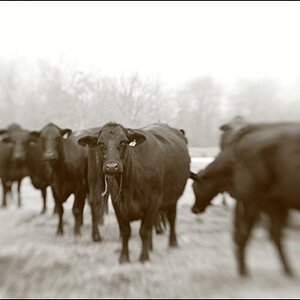- Joined
- May 1, 2008
- Messages
- 25,418
- Reaction score
- 4,999
- Location
- UK - England
- Website
- www.deviantart.com
- Can others edit my Photos
- Photos OK to edit
OK we all know that if a lens is mounted on a tripod then its IS/VR/OS off and if its handheld its turn it on. That is all straight forward and simple to get, but what about all the other times?
What about using on a monopod, or braced against a fence, or leaning against a tree? Just how much movement is needed for it to be worth using the feature and how much stability is needed before the feature starts to adversly affect image quality.
and further more just how bad is its softening effect anyway?
What about using on a monopod, or braced against a fence, or leaning against a tree? Just how much movement is needed for it to be worth using the feature and how much stability is needed before the feature starts to adversly affect image quality.
and further more just how bad is its softening effect anyway?





![[No title]](/data/xfmg/thumbnail/42/42272-c0d91b9d0872bcdfbcdfb5bb0529e302.jpg?1619740081)




![[No title]](/data/xfmg/thumbnail/31/31701-24a40368b575b319cb332e3114f39172.jpg?1619734961)


